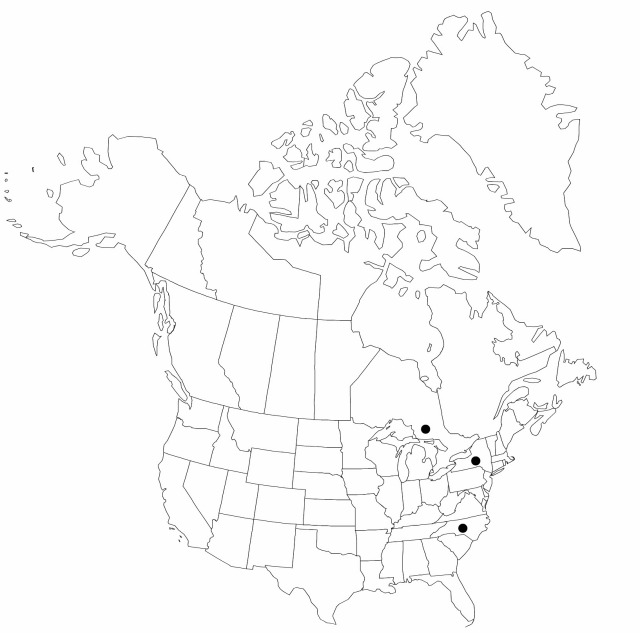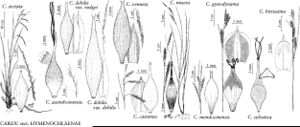Carex sylvatica
Fl. Angl., 353. 1762.
Plants densely cespitose. Culms pale brown to ivory at base, sometimes with a few brown fibrillose remains of previous year’s leaves, but not densely covered with fibrils; flowering stems 25–110(–200) cm, longer than leaves at maturity, 1–1.3 mm thick, glabrous. Leaves: sheaths glabrous, proximal ones ivory grading distally to light green, all bearing blades, pale hyaline on front; blades flat, (3–)5.5–8.5(–15) mm wide, glabrous on both surfaces, finely scabrous on margins. Inflorescences: peduncles of lateral spikes 5–20 mm, scabrous; peduncle of terminal spike less than 20 mm, scabrous; proximal bracts usually shorter than entire inflorescence; sheaths 20–100 mm; blades 2–3 mm wide. Lateral spikes: 3–5, 1 per node, the proximal well separated, erect to somewhat nodding, distal ones crowded near apex; proximal spikes pistillate with 15–40 spreading perigynia attached 1–1.5 mm apart, cylindric to elongate, 15–60 × 3–5 mm; distal spikes staminate or androgynous. Terminal spike staminate or androgynous with a few pistillate flowers at base, 15–40 × 2.5–3 mm. Pistillate scales white-hyaline with broad green midrib, oblong-lanceolate, shorter than mature perigynia, apex acute, cuspidate, or awned, glabrous. Perigynia green maturing to light brown, conspicuously 2-ribbed but otherwise veinless except for short inconpicuous veins at base, substipitate, tightly enveloping achene, obovoid, 4.5–6 × 1.4–1.8 mm, membranous, apex abruptly narrowed to tubular beak, glabrous; beak bidentate, slender, 2–3 mm, teeth 1 mm. Achenes sessile, 2.2–2.6 × 1.2–1.5 mm. 2n = 58 (Czechoslovakia, Germany, Great Britain, Iberian Peninsula, Poland, Sweden)
Phenology: Fruiting summer.
Habitat: Disturbed areas in deciduous forests
Distribution

Ont., N.Y., N.C., Europe, introduced New Zealand.
Discussion
No hybrids are reported in the flora, although in Europe Carex sylvatica hybridizes with C. strigosa and C. hirta.
Selected References
None.
